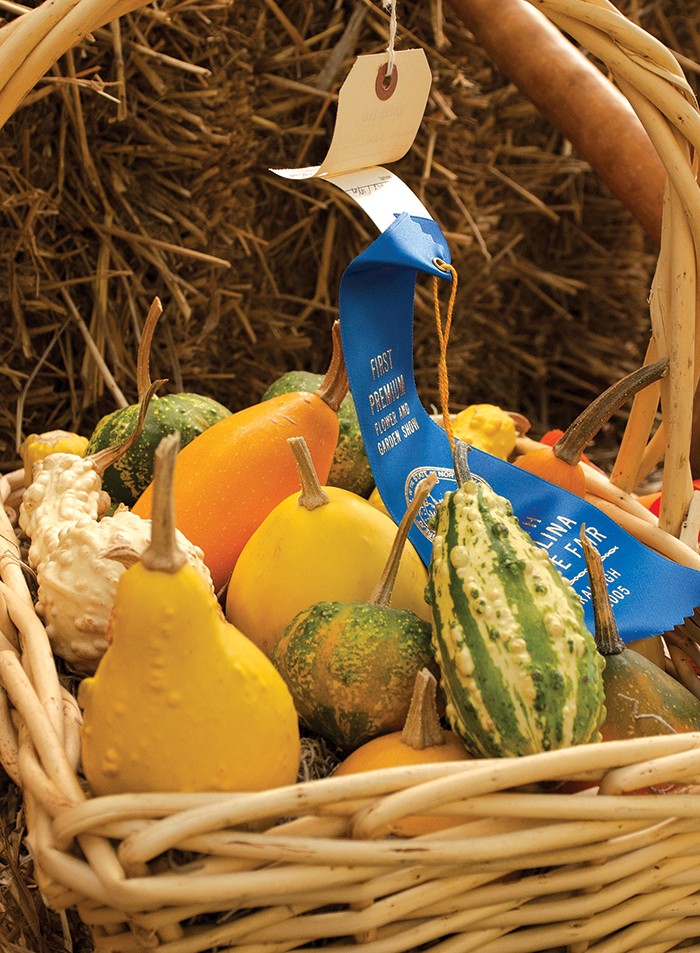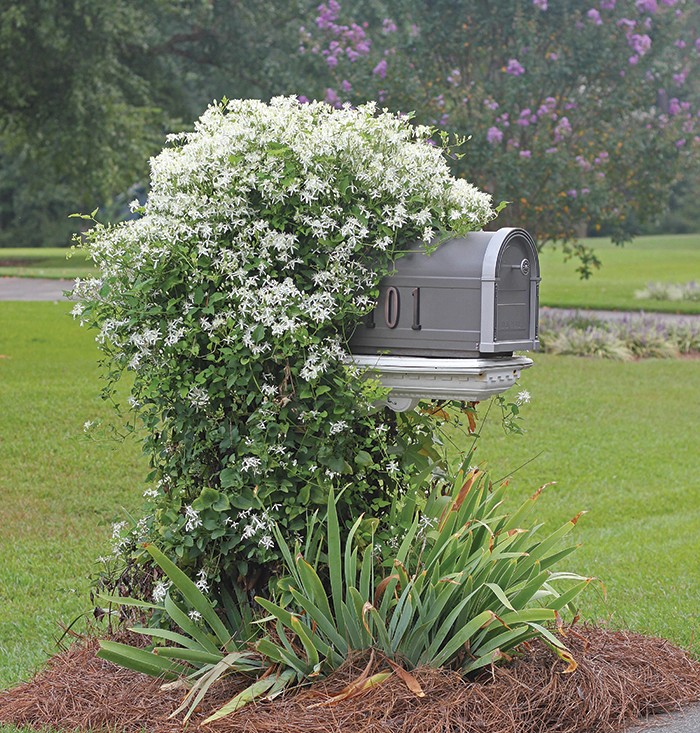At first glance, sweet autumn clematis (Clematis terniflora) seems to be an ideal perennial for area gardens. Introduced into the States by Boston’s prestigious Arnold Arboretum in 1877, this native of the Orient is a deer-resistant, heat-tolerant, deciduous, winter-hardy vine that can easily stretch over 20 feet in length — more than enough to cover an unsightly run of fence, plain mailbox or arbor in need of summer shade. As advertised, sweet autumn clematis also adorns itself with a gorgeous wrap of dainty, enticingly fragrant white flowers beginning in late summer and continuing into the early fall.
So, what’s not to like about sweet autumn clematis?
Well, truth be told, it can be quite the weedy brute in a landscape. Soon after flowering, this clematis sets seeds. Lots of seeds. Seeds attached to fluffy tufts that sail away on the breeze to spread more fast-growing vines to your yard, your neighbor’s yard, your neighbor’s neighbor’s yard — you get the picture.
Considered invasive in some states, sweet autumn clematis is still offered for sale at nurseries and online sites because the plant grow-pros know the beast in this beauty can be tamed. The solution to stop its spread is simple: After the flowers peak, snip them off before they go to seed. A hedge trimmer can do the deed quickly, and while you’re whacking spent blooms away, why not cut the foliage and branches back to keep the plant in bounds?
I don’t need a big, bodacious vine, so as the blooms on my sweet autumn clematis fade into a seedy swoon, I actually cut the branches down to about a foot from the ground. Every following spring, they always come roaring back, and freely flower once again late in the summer on new, vigorous limbs that effortlessly climb 8 to 10 feet during the growing season.
Basically, if you commit to growing this plant, be a responsible gardener. To prevent its spread, be dang sure you also commit to pruning it right after flowering every autumn.
Now that you have been suitably schooled on controlling sweet autumn clematis, if you want to enjoy its pretty, fragrant presence late in the growing season, for the best flower show, plant this vine in well-worked soil in a sunny location. It will also bloom in semi-shade, but displays won’t be as impressive. And, as with other clematis cuties, it prefers cool roots, so maintain a 3- to 4-inch layer of mulch around its base through the growing season.

N.C. State Fair
Proud of your garden? Enjoy a little friendly competition? Consider combining these two pleasures by entering some of your botanical best efforts at the N.C. State Fair’s Flower and Garden Exhibits’ contests in Raleigh.
The fair will be here before you know it (October 17-27), so look over all your garden pretties and produce for possible contenders and start babying them into blue-ribbon shape. This includes fruits, vegetables, houseplants, cut flowers and floral arrangements. If you want to check out the Flower and Garden competition categories and rules, go online to ncstatefair.org.
To Do in the Garden
September
- Before the leaves of autumn come tumblin’ down, examine deciduous trees and shrubs for any damaged, diseased or dead limbs. Pruning off such afflicted branches improves the plants’ appearance for next year and also helps keep them healthy.
- Speaking of tumblin’ autumn leaves, they can make quite a mess in a water garden. An easy way to keep them out is to cover the pond’s surface with a fine mesh netting, and use a leaf blower to swoosh any excess fallen foliage off the covering once or twice a week.
- Many lawn and garden centers want to move out garden equipment this month to make room for holiday merchandise, so watch for sales on mowers, string trimmers, tillers, hoses and other outdoor handyman helpers.
- The cool-season veggie garden can be cranked up early this month with plantings of such delectable edibles as broccoli, cauliflower, kale, lettuce, mustard greens, onions, radishes, arugula and spinach.
- Extend the pleasures of the culinary seasonings garden by potting up and bringing in divisions of herbs such as lemon balm, mint, thyme, oregano, parsley and chives. These are easy to care for indoors over the coldest months, if placed close to windows well visited by the low winter sun.
- Indoor plants that have vacationed out on the porch or patio this summer should be returned inside before nighttime temperatures dip into the 50s. While moving them, check their leaves carefully for bugs and (especially) clusters of insect eggs.







